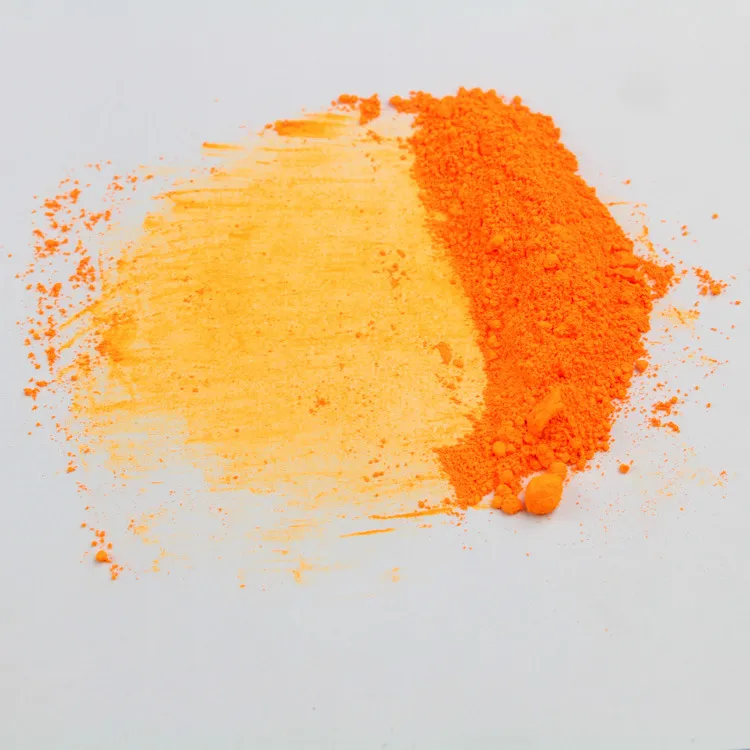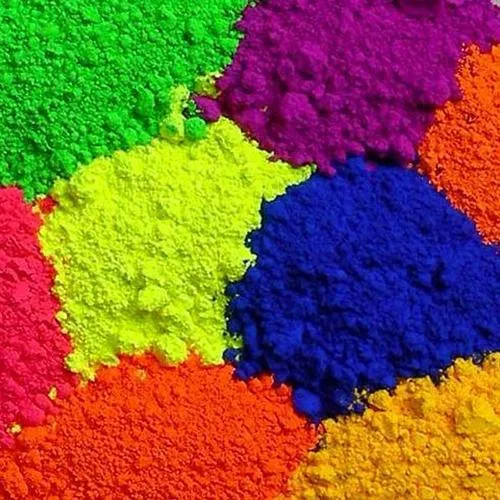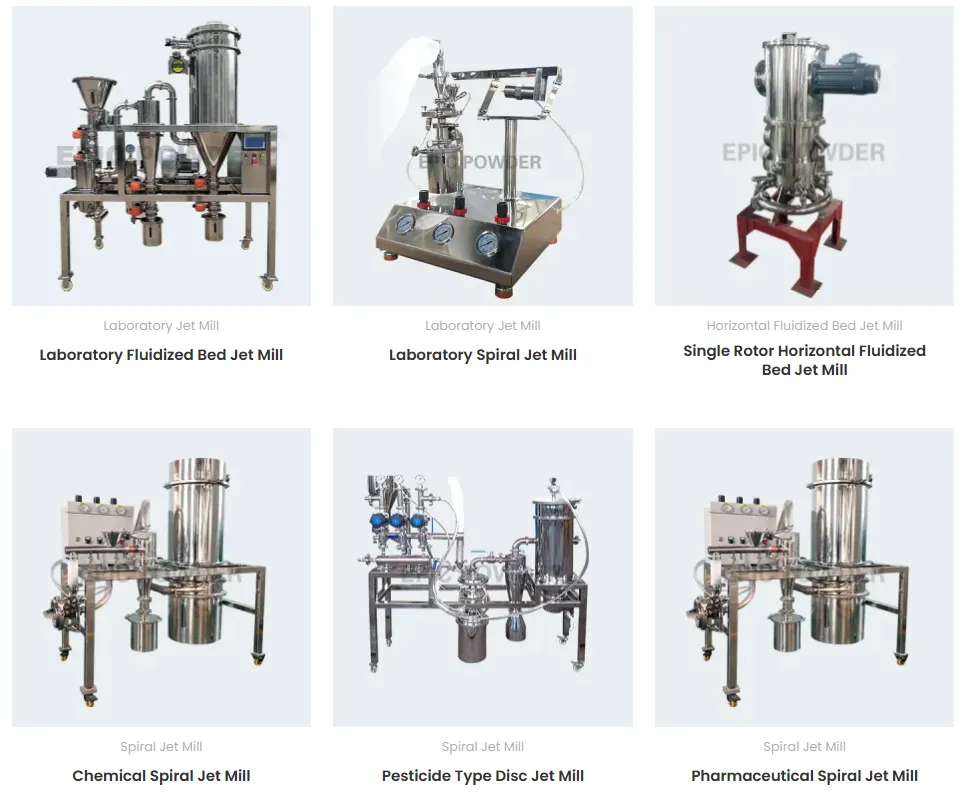What Is Phosphor Powder?
Phosphor powder is a luminescent material that absorbs energy and re-emits it as visible light. It is composed of host crystals doped with activator elements such as europium, terbium, or cerium. These powders are the backbone of various fluorescent and phosphorescent products, enabling applications like lighting, displays, and glow-in-the-dark materials. Phosphor powders come in various chemistries including yttrium aluminum garnet (YAG), zinc sulfide (ZnS), and strontium aluminate. The particle size, morphology, and purity of these powders critically influence their luminescence efficiency, decay time, and color purity. Jet milling stands out as the preferred technology for grinding phosphor powders to ultrafine particle sizes with narrow size distribution.

The Role and Applications of Phosphor Powder
Phosphor powders have a wide-ranging impact on modern technology and daily life. They are a vital component in LED lighting, where high-efficiency phosphors enable bright, energy-saving lighting with accurate color rendering. In display screens, phosphors create vibrant and sharp images for televisions, smartphones, and monitors.
The security industry benefits from phosphor powders through their incorporation into anti-counterfeiting inks and sensors. Additionally, phosphors are used in medical imaging and diagnostics, enhancing visualization through luminescence.
Indoor and outdoor glow-in-the-dark products, including safety signage and decorative items, rely heavily on phosphors with controlled afterglow properties. Here, particle size uniformity and high purity are essential to maximize performance and durability.
Industry reports estimate that the global phosphor powder market will reach approximately $3.5 billion by 2030, growing steadily due to rising demand in lighting and display sectors. This trend underlines the importance of advanced milling technologies to produce high-quality phosphor powders.

Why Use Jet Milling for Phosphor Powder?
Jet milling stands out as the preferred technology for grinding phosphor powders to ultrafine particle sizes with narrow size distribution. The process utilizes high-speed gas jets—often compressed air or inert gases—to accelerate particles within a grinding chamber. These particles collide at supersonic speeds, breaking down into finer sizes through particle-particle interaction.
This method offers several advantages for phosphors. First, it avoids mechanical contact, reducing the risk of contamination from grinding media and equipment surfaces. This is critical, as phosphor purity directly affects luminescence efficiency.
Secondly, the high-velocity impact milling allows achieving uniform, fine powders typically in the 2 to 10-micron range. Optimal particle size ensures maximum light conversion efficiency and consistent color.
Moreover, jet mills operate with a self-cooling effect provided by the expanding compressed gas, preventing overheating and degradation of heat-sensitive phosphor materials. For phosphors doped with rare-earth elements, preserving chemical structure during milling is vital.
Lastly, jet milling’s closed-loop operation ensures minimal dust generation and environmental emission, making it a clean and safe choice for sensitive powder processing.
Issues to Consider When Jet Milling Phosphor Powder

While jet milling provides clear advantages, several issues must be addressed for optimal phosphor milling.
Material feed quality is essential. Feedstock should be pre-processed to remove agglomerates or oversized particles that can block the mill or lead to inconsistent grinding. Pre-dry powders help prevent humidity-induced clumping, which complicates size reduction.
Process parameters such as gas pressure, feed rate, and classifier wheel speed need precise optimization. Higher gas pressure yields finer powders but increases energy consumption and wear of mill components. Over-grinding can produce excessive fines, which may reduce luminescent efficiency and complicate downstream handling.
Contamination control is another key factor. Using wear-resistant linings like silicon carbide and ceramic coatings in contact areas significantly reduces the risk of metallic impurities, which is crucial for phosphors intended for LEDs or medical use.
Temperature should be monitored throughout the process. Despite inherent cooling, localized heating can occur, necessitating cooling optimization to protect phosphor chemistry.
Finally, safety measures remain paramount. Fine phosphor powders may pose inhalation hazards and dust explosion risks. Adequate ventilation, dust collection, and explosion-proof equipment designs are indispensable.
Advantages and Disadvantages of Jet Milling for Phosphor Powders
Jet milling offers remarkable advantages. Its non-contact grinding reduces contamination levels by over 90% compared to conventional bead mills. The process is capable of producing powders with a narrow particle size distribution, typically yielding D50 between 3 to 8 microns—ideal for most LED phosphors.
The closed-loop design enhances operational safety while providing continuous and scalable production options, from laboratory to industrial scales. Cooling by gas expansion maintains chemical stability, preserving luminescent properties.
However, jet milling does require significant energy input due to the high-speed gas jets, which can impact operational costs. Additionally, wear parts such as nozzles and liners require periodic replacement—especially when milling abrasive phosphor powders—resulting in maintenance costs.
Initial investment is generally higher than for mechanical mills, and successful operation demands skilled technicians to optimize parameters and troubleshoot.
Achievements with EPIC Powder Jet Milling for Phosphor Powders
Qingdao EPIC Powder Machinery Co., Ltd. offers advanced jet milling solutions designed to meet the stringent demands of phosphor powder processing.
Our jet mills feature precise control over gas pressure, feed rate, and classifier speed, enabling production of stable, ultrafine powders with highly consistent particle size. Typical outcomes are powders with D50 as low as 2 microns, narrow size distributions, and low contamination levels that meet or exceed LED industry standards.
Through the use of silicon carbide linings and ceramic-coated components, our systems greatly minimize metallic impurities that can degrade phosphor performance. Efficient airflow design and temperature control preserve phosphor chemical and physical integrity throughout milling.
Real-world client data shows that powders processed by EPIC’s jet mills exhibit up to 15% higher luminescent efficiency and longer stability in LED devices compared to powders milled with traditional methods. Additionally, production throughput is enhanced by averaging 200–300 kg/h per unit, supporting both small-scale R&D and large-volume manufacturing.
Our technical support team works closely with customers to tailor milling conditions for diverse phosphor chemistries, enabling optimized results across lighting, display, biomedical, and decorative applications.
Conclusion
Phosphor powders are critical components in modern lighting, display, and advanced material technologies. By addressing feed quality, parameter optimization, contamination control, and safety, operators can maximize the benefits of jet milling. EPIC Powder Machinery’s jet milling solutions offer cutting-edge technology designed specifically for phosphor powders, delivering precision, reliability, and scalability.
For industry-leading powder milling equipment and expert consultation tailored to your phosphor processing needs, contact Qingdao EPIC Powder Machinery Co., Ltd. We are dedicated to helping you achieve superior product quality and operational efficiency, empowering innovation across all your applications.